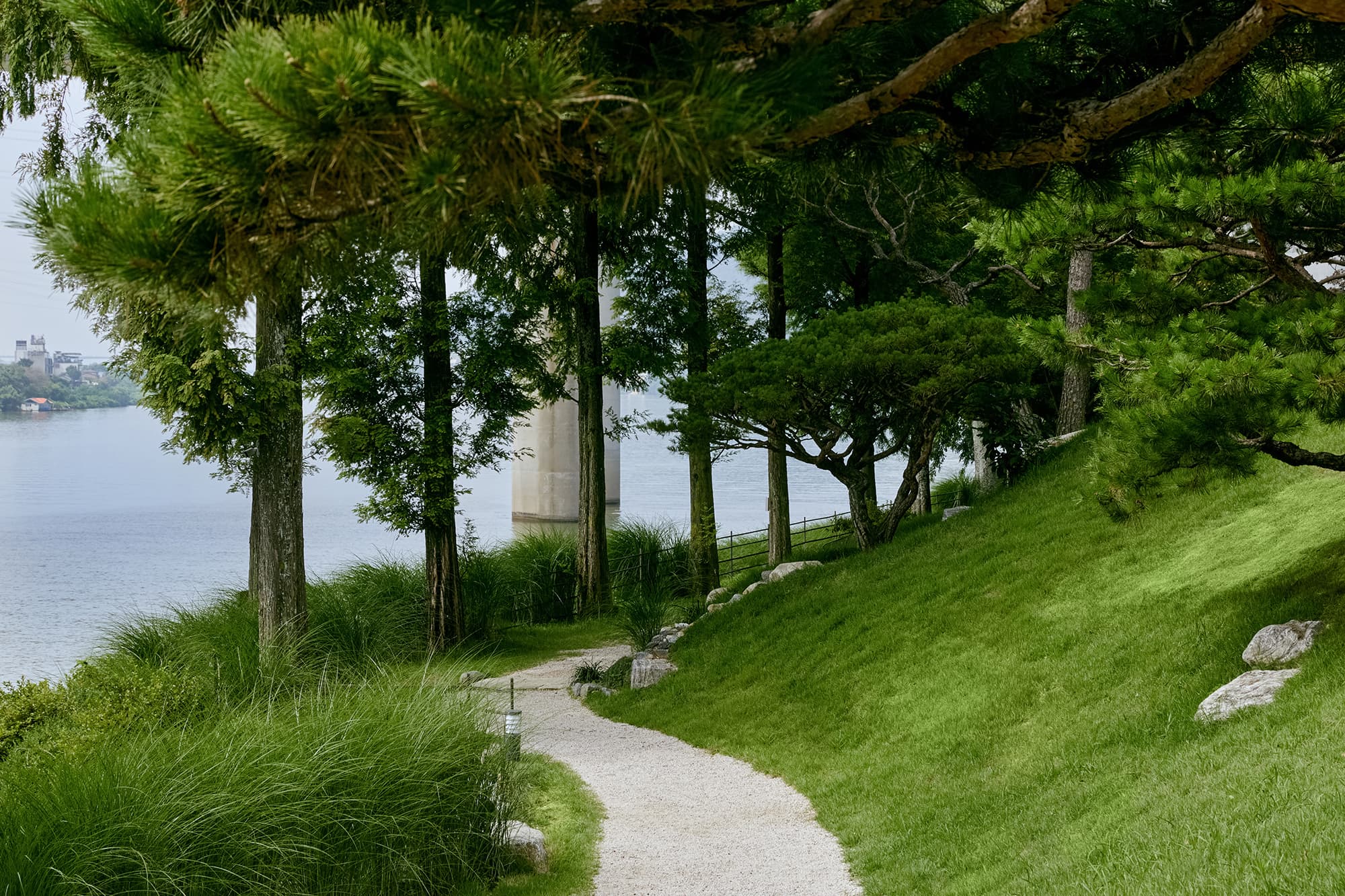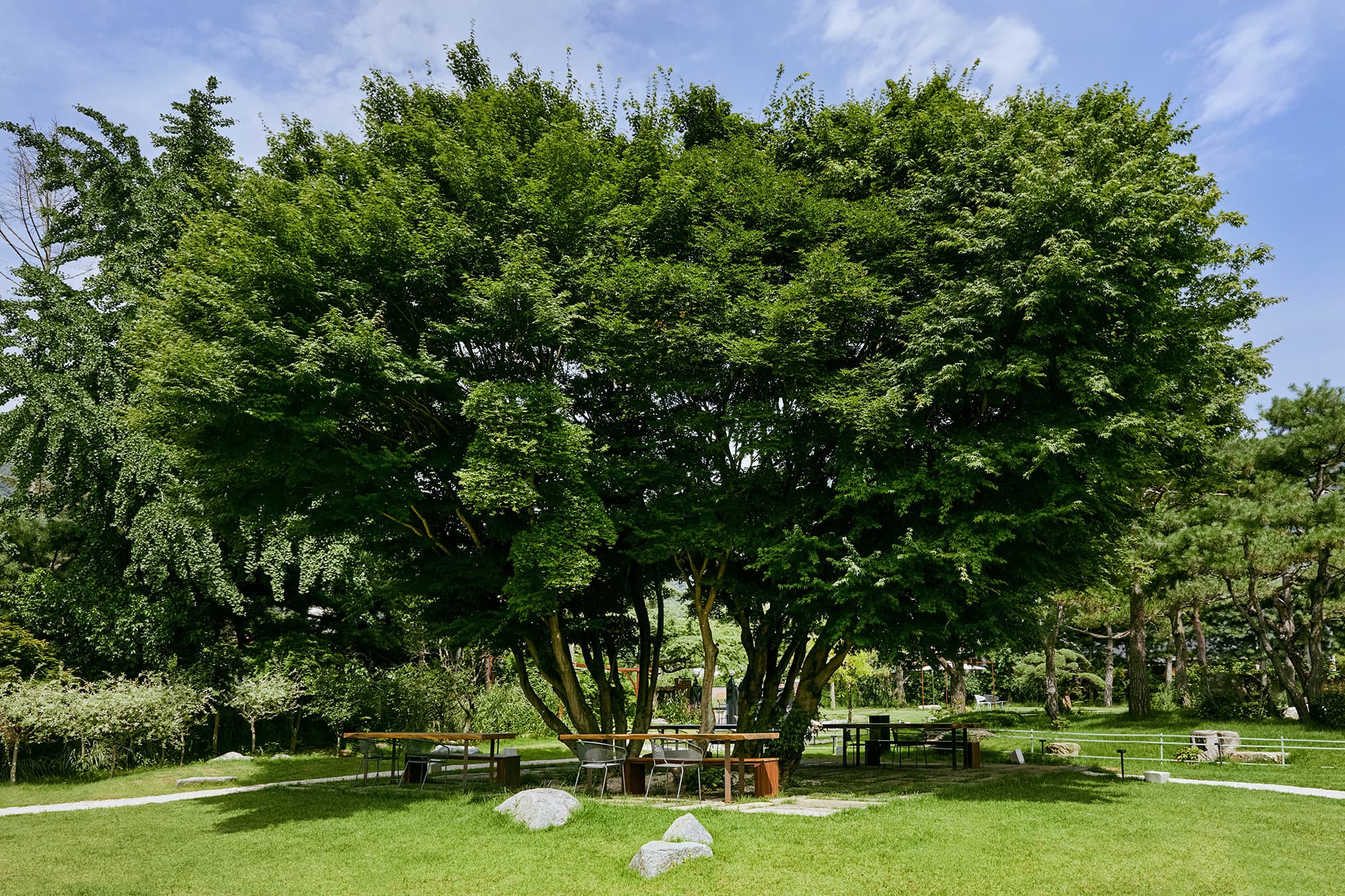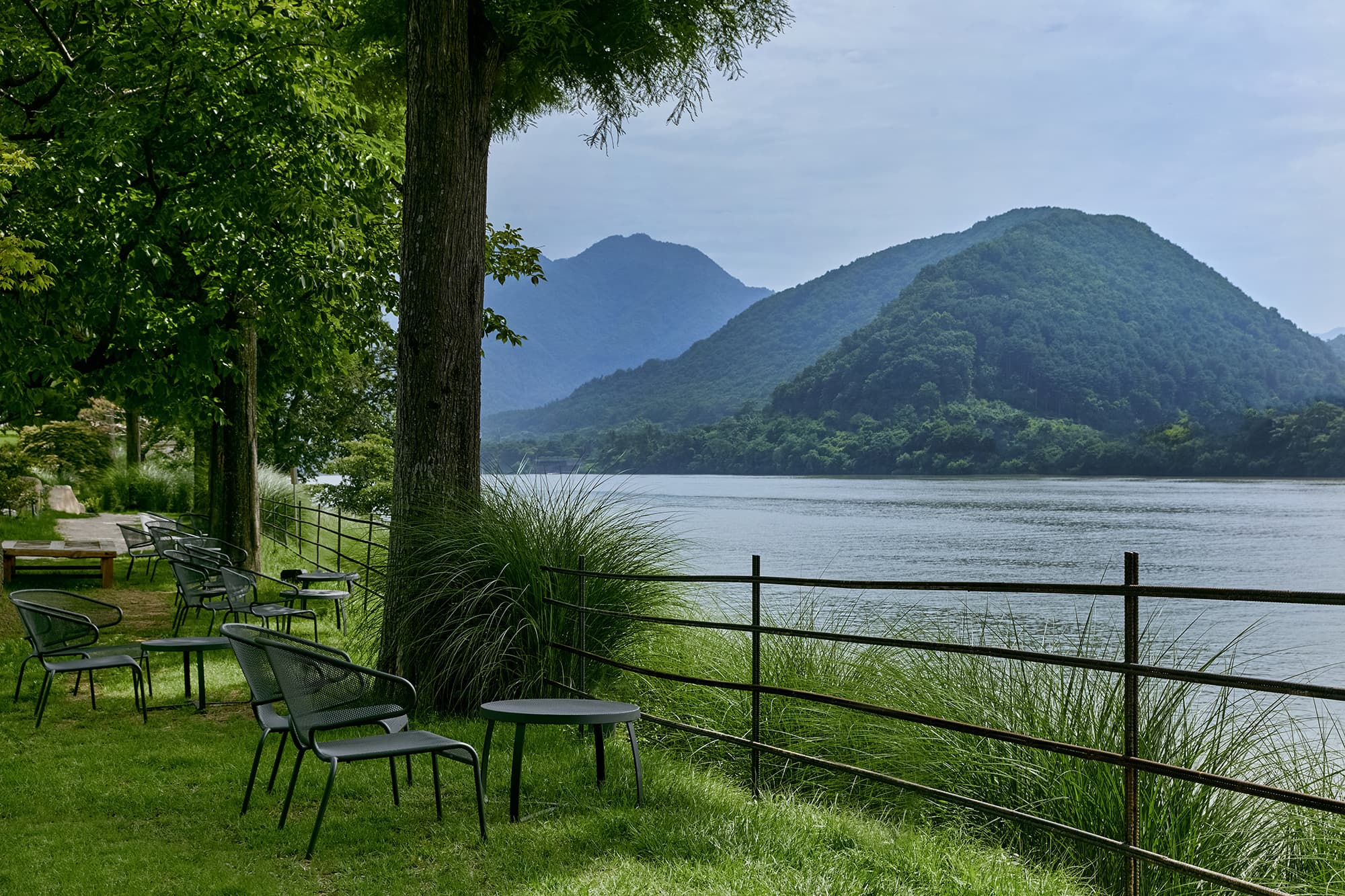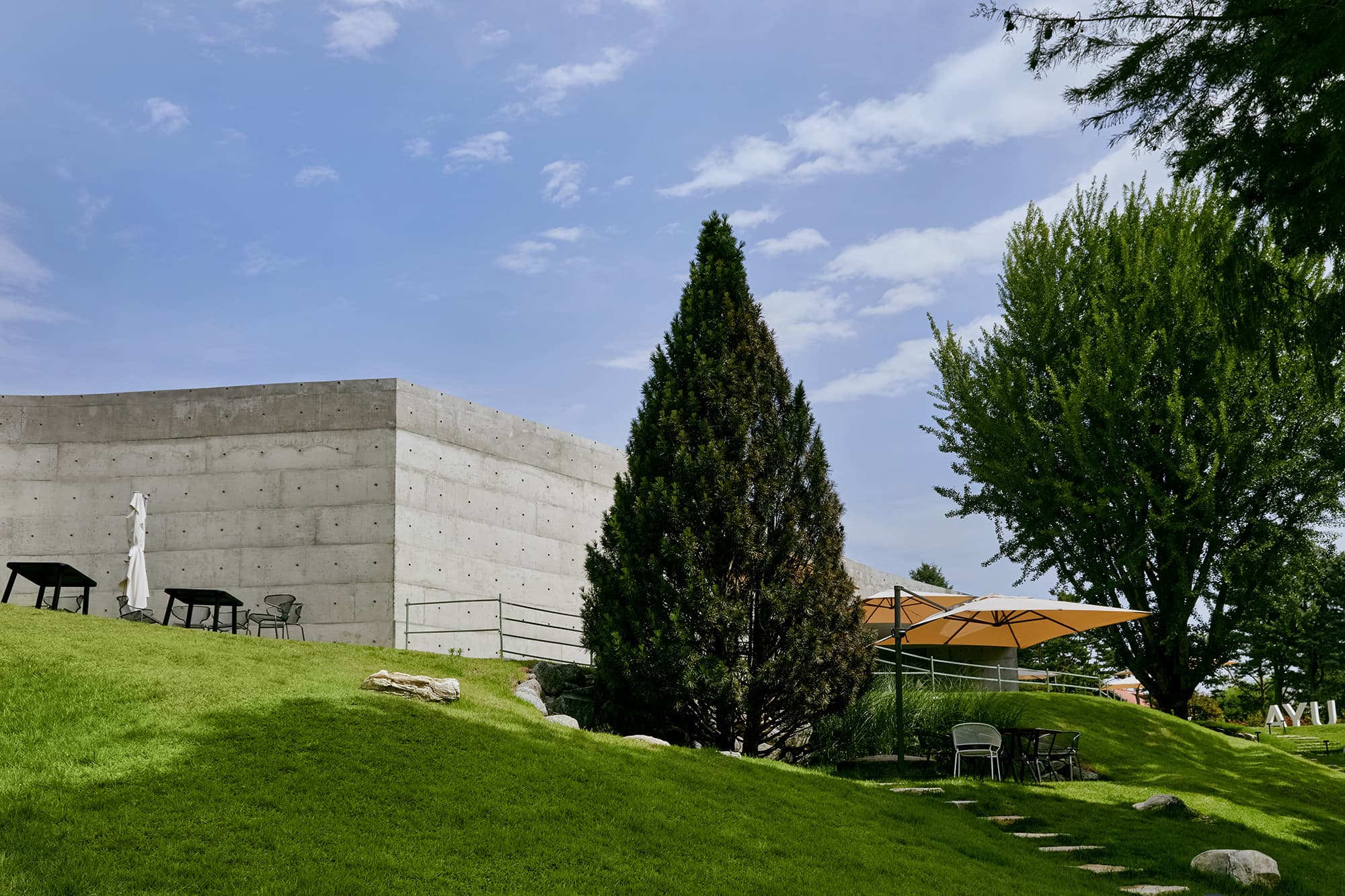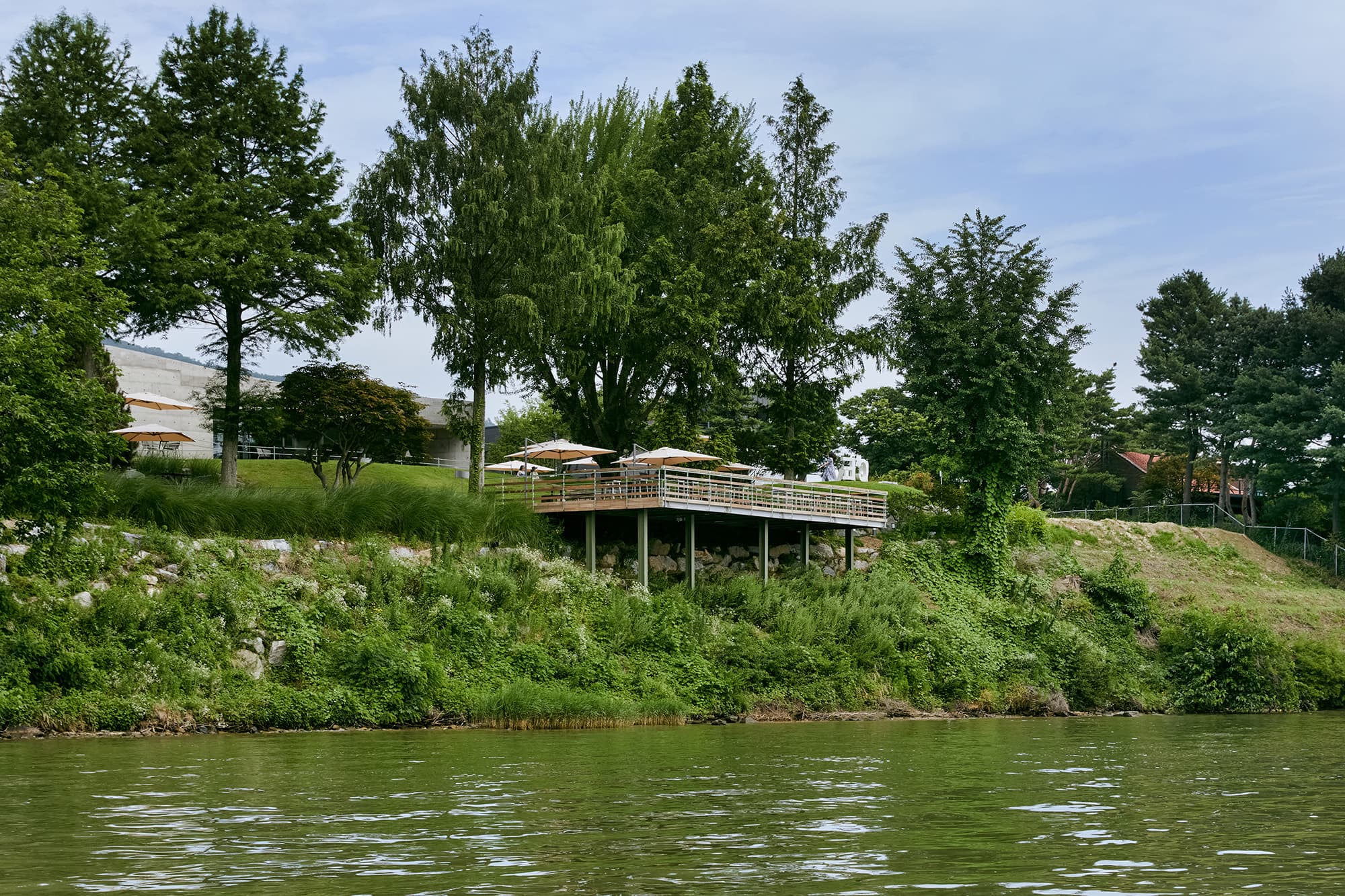Nature
“A Modern Korean Garden with the Philosophy of Unassuming Naturalism and a Borrowed Scenery System”
AYU SPACE garden has been reinterpreted with a modern sense of the philosophy of Unassuming Naturalism, which is characteristic of Korean gardens. This philosophical garden has been designed in a way where its uniqueness can be recognized not only by locals but also by foreigners.
Lao-tzu’s philosophy of purity was a key element of Korean landscape culture that wanted to put “as natural as it is” in the garden, and can be found in Soswaewon, Seyeonjeong, Baekundong Garden, and Habitat Garden, which all contain the aesthetics of emptying and filling.
Bukhan River, where AYU SPACE is located, originates from Geumgang-gun, Gangwon-do in North Korea, and provides clean water to the citizens of the metropolitan area, as well as providing a Blank space for life with outstanding natural scenery. Reflecting these topographical characteristics, the AYU SPACE garden emphasizes a simplicity that is neither too much nor too little.
All the buildings within the AYU SPACE are surrounded by curved hills covered with lawns, pine trees, and other trees and plants, serving as a healing place where people can rest comfortably within the harmonious balance of architecture and nature.
The curving granite promenade, which leads between buildings, lawns, and the banks of the Bukhan River, uses the aesthetics of curves to echo Korea’s mountains, Hanok, Hanbok, and many more of Korea’s natural lines. This promenade stimulates one’s precious memories and imagination while unleashing their abilities to the fullest.
The sound of swaying reeds around the promenade, the rustling of the Bukhan River, the sound of the wind, and the chirping of birds are in harmony with the music flowing in the garden.
The large old trees such as metasequoia, calendula, ginkgo, maple, and cherry trees along the river, fuse their traces of long history with the surrounding mountains, sky, and river water. Thus, the borrowed scenery system of garden art is completed.
AYU SPACE garden is largely divided into five areas: Hanok Garden, Pine Garden, Maple Garden, Ginkgo Garden, and Water Garden. The flowers and trees on the stone steps leading down to the river are the most impressive part of the AYU SPACE garden, along with the softly lit moonlit river and the stars in the night sky. Together, these elements transport the visitor into another world of nature that transcends space and time.
AYU SPACE contains Korean culture and beauty, faithful to the essential characteristics of Unassuming Naturalism, and expresses a complex emotional atmosphere that is difficult to express in gardening techniques with a new modern interpretation. We have completed a new five-sensory space that communicates with the language of nature.
